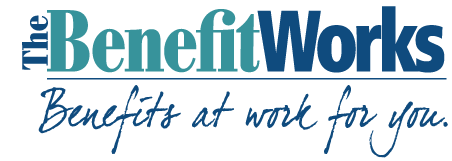OVERVIEW
On Sept. 11, 2019, the IRS updated their Questions and Answers (Q&As) on the employer shared responsibility rules under the Affordable Care Act (ACA), to include adjusted penalty amounts for 2019 and 2020. According to the FAQs, the penalty amounts will be increased as follows:
- For calendar year 2019, the adjusted $2,000 amount is $2,500 and the adjusted $3,000 amount is $3,750.
- For calendar year 2020, the adjusted $2,000 amount is $2,570 and the adjusted $3,000 amount is $3,860.
ACTION STEPS
Employers that owe a pay or play penalty will receive a Letter 226-J from the IRS, which will propose and assess the applicable penalties. The IRS began issuing Letter 226-J to employers in late 2017 to propose and assess pay or play penalty liability for the 2015 calendar year. For 2016 calendar year liability, the IRS began issuing Letter 226-J in 2018.
Employers subject to these rules should ensure that they are offering the required coverage, or they may face increased penalties for each year in which they fail to comply.
Overview of the Pay or Play Penalties
The ACA requires applicable large employers (ALEs) to offer affordable, minimum value health coverage to their full-time employees (and dependents) or pay a penalty. This employer mandate is also known as the “employer shared responsibility” or “pay or play” rules.
An ALE will face a penalty if one or more full-time employees obtain a subsidy through an Exchange. An individual may be eligible for a subsidy either because the ALE does not offer coverage, or offers coverage that is “unaffordable” or does not provide “minimum value.”
Penalty for ALEs Not Offering Coverage—The 4980H(a) Penalty
Under Section 4980H(a), an ALE will be subject to a penalty if it does not offer coverage to “substantially all” full-time employees (and dependents) and any of its full-time employees receives an Exchange subsidy. An ALE satisfies the requirement to offer coverage to “substantially all” of its full-time employees and their dependents if it offers coverage to at least 95%—or fails to offer coverage to 5% (or, if greater, five)—of its full-time employees (and dependents).
Under Section 4980H(a), the monthly penalty assessed on ALEs that do not offer coverage to substantially all full-time employees (and their dependents) is equal to the ALE’s number of full-time employees (minus 30) x 1/12 of $2,000, for any applicable month. After 2014, the $2,000 penalty amount is indexed by the premium adjustment percentage for the calendar year.
Penalty for ALEs Offering Coverage—The 4980H(b) Penalty
ALEs that do offer coverage to substantially all full-time employees (and dependents) may still be subject to penalties if at least one full-time employee obtains a subsidy through an Exchange because:
The ALE did not offer coverage to all full-time employees; or
The ALE’s coverage is unaffordable or does not provide minimum value.
Under Section 4980H(b), the monthly penalty assessed on an ALE for each full-time employee who receives a subsidy is 1/12 of $3,000 for any applicable month. However, the total penalty for an ALE would be limited to the Section 4980H(a) penalty amount. After 2014, the $3,000 penalty amount is indexed by the premium adjustment percentage for the calendar year.
Pay or Play Penalty Adjustments
The pay or play rules provide for an inflation adjustment beginning in calendar years after 2014. For calendar years after 2014, the applicable per-employee penalty amounts of $2,000 and $3,000 are increased based on the premium adjustment percentage for the year, as follows:
For 2015, the adjusted $2,000 amount is $2,080 and the adjusted $3,000 amount is $3,120.
For 2016, the adjusted $2,000 amount is $2,160 and the adjusted $3,000 amount is $3,240.
For 2017, the adjusted $2,000 amount is $2,260 and the adjusted $3,000 amount is $3,390.
For 2018, the adjusted $2,000 amount is $2,320 and the adjusted $3,000 amount is $3,480.
For 2019, the adjusted $2,000 amount is $2,500 and the adjusted $3,000 amount is $3,750.
For 2020, the adjusted $2,000 amount is $2,570 and the adjusted $3,000 amount is $3,860.
Enforcement Procedures
The general procedures the IRS uses to propose and assess the employer shared responsibility penalties are described in Letter 226-J. The IRS will issue Letter 226-J to an ALE if it determines that, for at least one month in the year, one or more of the ALE’s full-time employees was enrolled in a qualified health plan for which a premium tax credit was allowed (and the ALE did not qualify for an affordability safe harbor or other relief for the employee).
ALEs must respond to Letter 226-J—either agreeing with the proposed employer shared responsibility penalty or disagreeing with part or all of the proposed amount—before any employer shared responsibility liability is assessed and notice and demand for payment is made. Letter 226-J provides instructions for how the ALE should respond in writing.
If, after correspondence between the ALE and the IRS, the IRS determines that an ALE is liable for an employer shared responsibility penalty, the IRS will assess the penalty and issue a notice and demand for payment (Notice CP 220J). Notice CP 220J will:
- Include a summary of the employer shared responsibility penalty and reflect any payments made, credits applied and the balance due, if any;
- and Instruct the ALE how to make a payment, if any.
ALEs will not be required to include the employer shared responsibility penalty on any tax return that they file or make a payment before notice and demand for payment. For payment options, such as entering into an installment agreement, refer to Publication 594, The IRS Collection Process.
The employer shared responsibility penalty is subject to IRS lien and levy enforcement actions. Interest will accrue from the date of the notice and demand and continue until the ALE pays the total penalty balance due.

